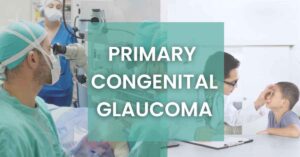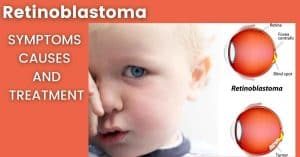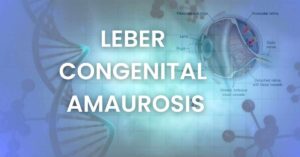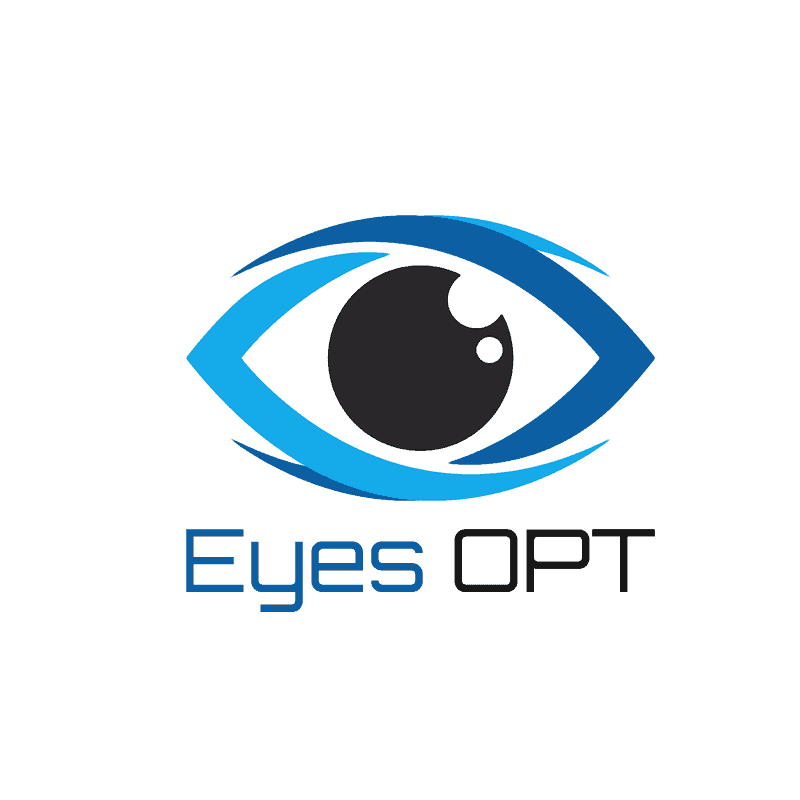Usher syndrome is a genetic disorder. The problem starts with deafness and further it is accompanied by retinitis pigmentosa that ends up with vision loss. As it is a hereditary eye disease, so it affects multiple functions of the body like both hearing and vision. We know that normal hearing depends upon the normal development of the ear. But, Usher Syndrome affects hearing because of the abnormal development of hair cells in the inner ear. This leads to impairment of auditory nerves. Usher syndrome also affects vision by influencing the normal function of the retina by encouraging retinitis pigmentosa. Sometimes, the usher syndrome also affects balance which results in deafness and blindness.
How Common is Usher Syndrome?
The frequency of cases having this syndrome is 4 to 17 per 100,000 individuals. This ratio includes about 50 percent of those who have a family history of this disorder. This means the Usher syndrome gene is dominant in those families from generations. The basis of the name lay upon the name of a Scottish eye doctor named Charles Usher.
Where is Usher Syndrome Most Common?
A high prevalence of Usher syndrome is in Jewish in Israel, people of Germany, Berlin, Nigerian Africans, French Canadians of Louisiana, Argentineans of Spanish descent, and Finland.
What Are The Types Of Usher Syndrome?
Usher syndrome is varied from individual to individual. This disease may show severe symptoms in one individual but, on the other hand, may have mild symptoms in others. This syndrome is divided into further three types:
- First one is Usher Syndrome Type 1
- The second one is Usher Syndrome Type 2
- And the third one is called Usher Syndrome Type 3
Type 1 :
Children who are suffering from type 1 Usher syndrome are usually deaf at birth and have severe balance issues. These symptoms get worse over time. No hearing aids can facilitate these children. But cochlear implantation helps them to improve their hearing a little bit. The parents should bring their children as soon as possible to the doctors to find a way out. This is because children of younger age have brains that are quick in learning both sign and spoken language.
As Type 1 children also suffer from severe balance problems, the delay in sitting without support and walking before 18 months is rare. Furthermore, Usher syndrome patients suffer from vision problems before the age of 10 years. This becomes noticeable when the affected child has the problem of seeing at night. This leads to absolute night blindness. Afterward, this leads to severe vision loss in the upcoming decades.
Type2
Children who have type 2 Usher syndrome suffer from moderate to severe hearing problems. However, these children have no issues with balance and coordination. Moreover, the children can get benefit from hearing aids and can communicate orally. In this type, the retinitis pigmentosa reveals in late adolescence. As a result, symptoms of retinitis pigmentosa do not manifest in early childhood. This leads to night blindness first whereas permanent vision loss happens in midlife.
Type 3 :
Children with type 3 Usher syndrome have normal hearing and normal to near-normal balance at the time of their births. But gradually they develop hearing and balance issues by the age of adolescence. They need hearing aids by mid-to-late adulthood. Along with this, they experience night blindness during adolescence. But blind spots appear on the retina in the late teens or early twenties and complete vision loss happens in midlife.
What Are The Symptoms of Usher Syndrome?
The severity of symptoms depends on the type of Usher syndrome and how it affects each individual. The most common symptoms are:
- Deafness or hearing loss
- Development of Retinitis Pigmentosa
- Balance Dysfunction
The individual having this syndrome experiences hearing loss because of the impairment of the ability of auditory nerves. Auditory nerves transmit sensory messages to the brain. Auditory nerves also contribute to the development of hearing cells in the inner ear. Vision loss happens due to the development of retinitis pigmentosa. All symptoms of retinitis pigmentosa appear in chronological order. Balance abnormalities are the obvious symptom of Usher syndrome. The individuals face sitting issues without support and delay in walking. Other severe balance problems occur over time.
What causes vision loss in Usher syndrome?
Usher syndrome is an inherited disease that individuals get from their parents. Every individual has two copies of the gene, one from the mother and one from the father. Sometimes the genes in the individuals are altered or mutated which causes the maldevelopment of cells. These abnormalities affect the normal function of the human body. The mutation in ten genes causes Usher syndrome. This mutation results in the disruptive making of protein that converts oxygen, fats, and sugar to energy. This energy is vital for the functions of hearing and vision as well as maintaining body balance.
Is Usher Syndrome an Autosomal Recessive Disorder?
Usher syndrome is an “autosomal recessive disorder”. Autosomal disorder means that both parents can transfer the faulty or mutated gene to their children. Further, this faulty gene may transfer to both genders. So, Usher syndrome is an autosomal disorder means it transfers to both boys and girls from both parents. ‘Recessive’ means that the faulty gene manifests its presence only when both copies of maternal and paternal DNA has the defective gene. If the child has only one faulty gene then it means the child is a ‘carrier’. There is a 50% chance of transferring that faulty gene to his/her generation in the future. When both partners are carriers of the mutated gene of Usher syndrome, there are three possibilities for gene transmission.
Possibilities of Usher Syndrome
These possibilities are:
- One in four has the chance that the child neither has this syndrome nor is the carrier.
- Two in four has the chance that the child has an unaffected mutated Usher syndrome gene. Such a child will be the carrier.
- One in four has the chance that the child is born with this syndrome.
Diagnosis of Usher Syndrome
The early diagnosis of this syndrome is very crucial in the treatment of hearing, vision, and balance issues in children. At an early stage, hearing and visual management are manageable. At such a point the use of any hearing or visual aid will help. No intervention can make any improvement if the disorder is diagnosed late. It is important to identify this disorder’s presence before permanent impairment of hearing and visual functions. This syndrome can be diagnosed by the following testing:
- Use of Dilating Drops
- Visual Field Testing
- Electroretinogram Test
- Optical Coherence Tomography
- Videonystagmography Test
- Audiology Testing
- Genetic Testing
Use of Dilating Drops
The dilating drops dilate the pupil and reveal a broad fundus view. This helps in examining the retina. This eases the retina examination that whether the individual is suffering from retinitis pigmentosa or not. The diagnosis of retinitis pigmentosa acts as a marker of Usher syndrome identification; whether the individual has this syndrome or not because individuals with this syndrome usually have retinitis pigmentosa simultaneously.
Visual Field Testing
Visual field testing measures both the extent of central and peripheral vision. It helps in measuring how far the eyes can see with having a fixed central stare. It also documents the visual sensitivity in different parts of the visual fields. The examination of the visual functions of the eye helps in determining whether the individual is facing impairment of vision or not.
Electroretinogram Test
The electroretinogram test helps in determining the electrical response of the light-sensitive eye cells; rods and cones. The rods are located in the peripheral retina whereas the cones are located in the central retina.
Optical Coherence Tomography
Optical coherence tomography uses rays of light to measure the thickness of the retina. This technology uses infrared radiation to avoid hurting and irritating individuals. It is a noninvasive imaging technology that helps in determining the high-resolution cross-sectional images of the retina.
Videonystagmography Test
The videonystagmography test is used to identify balance issues as it measures the involuntary movement of the eye known as nystagmus. Nystagmus is involuntary eye movement from side to side or up and down. The movement could be fast or slow, steady or jerky. Nystagmus has many extensive types.
Audiology Testing
Audiology testing shows results in the chart in the form of graphs. This test measures the ability:
- to hear the loudness
- the pitch of sounds
- discrimination of speech.
Genetic Testing
The Usher syndrome is comprised of approximately 10 genes mutation that can be diagnosed by individuals through genetic testing. Available genetic testing is:
- USH1C, PCHD15, USH1G, CDH23, MY07A for type 1.
- GPR98, DFNB31, USH2A genetic testing for type 2.
- Genetic testing for type 3 includes CLRN1
What Are The Treatments For Usher Syndrome?
Usher syndrome has no proven treatment till now. No surgery or medication can help. But the early diagnosis helps in starting educational programs for children of younger age. Young brains have more plasticity and are very receptive to new knowledge and learn very quickly. Different ways of treatment are used along with communication services that help the individual to communicate effectively. The treatment and communication services include:
Hearing Aids
It helps in listening to sounds and then interpreting by helping in sending signals to the brain.
Assistive listening devices
These devices help in listening; it includes TV streamers, notification systems, amplified telephones, and personal amplifiers.
Cochlear implants
This includes the small electronic device that is used to electrically stimulates the cochlear nerves. It has internal and external parts. The external part collects sounds through the microphone and then sends them to the internal part. The internal part transmits the sounds for further interpretation.
Auditory training
This training teaches the brain to listen. It includes the skills of sound awareness, discrimination of sound, identification of sound, and sound comprehension.
American Sign Language
It helps in communication through sign language. The individuals are taught sign language which helps them to communicate through their hand and other body movements.
Mobility training
It helps in resolving balance problems by increasing the range and motions of the body’s performance.
Furthermore, the use of Vitamin A is clinically proven beneficial for retinitis pigmentosa. Vitamin A slows down the progression of the retinitis pigmentosa and delayed permanent vision loss in individuals. The recommended amount of Vitamin A is 15,000 IU. But vitamin intake should start after the discussion with the health care provider.
Can Usher Syndrome Be Prevented?
Usher syndrome happens due to gene mutation and it is a hereditary disease. So, it can not be prevented as until the child has symptoms nobody can predict having this disorder. The parents can only do to bring their children to doctors as soon as possible. Early treatment and aids will help the particular children to deal with symptoms of this syndrome throughout their lives.
Usher Syndrome Awareness Day
September 18 is dedicated to the awareness day for Usher syndrome. On this day many voices are raised to bring attention to this genetic disorder which includes both deafness and blindness. The concerned members try to emphasize the importance of early diagnosis. This will help in efficiently treating the affected individuals and training them to lead independent-living lives.
Usher Syndrome Coalition
There are more than 400,000 active cases of Usher Syndrome in the world. However, It has no clinically proven treatment yet but there is a growing USH community. The purpose of the Usher syndrome coalition is to bring awareness among the masses and accelerate the research work about it. Furthermore, the coalition tries to provide the latest information about the disorder to the affected families. It supports them by giving different training to affected individuals to improve their hearing, vision, and balance skills. The Usher syndrome community is trying to fill the gap between the researchers and affected families by providing information about the latest development for coping with this disorder. This coalition helps the affected families to treat and manage the disorder more efficiently.







Pingback: Living With Usher Syndrome - EyesOPT
Pingback: Usher Syndrome ICD 10 Codes - EyesOPT